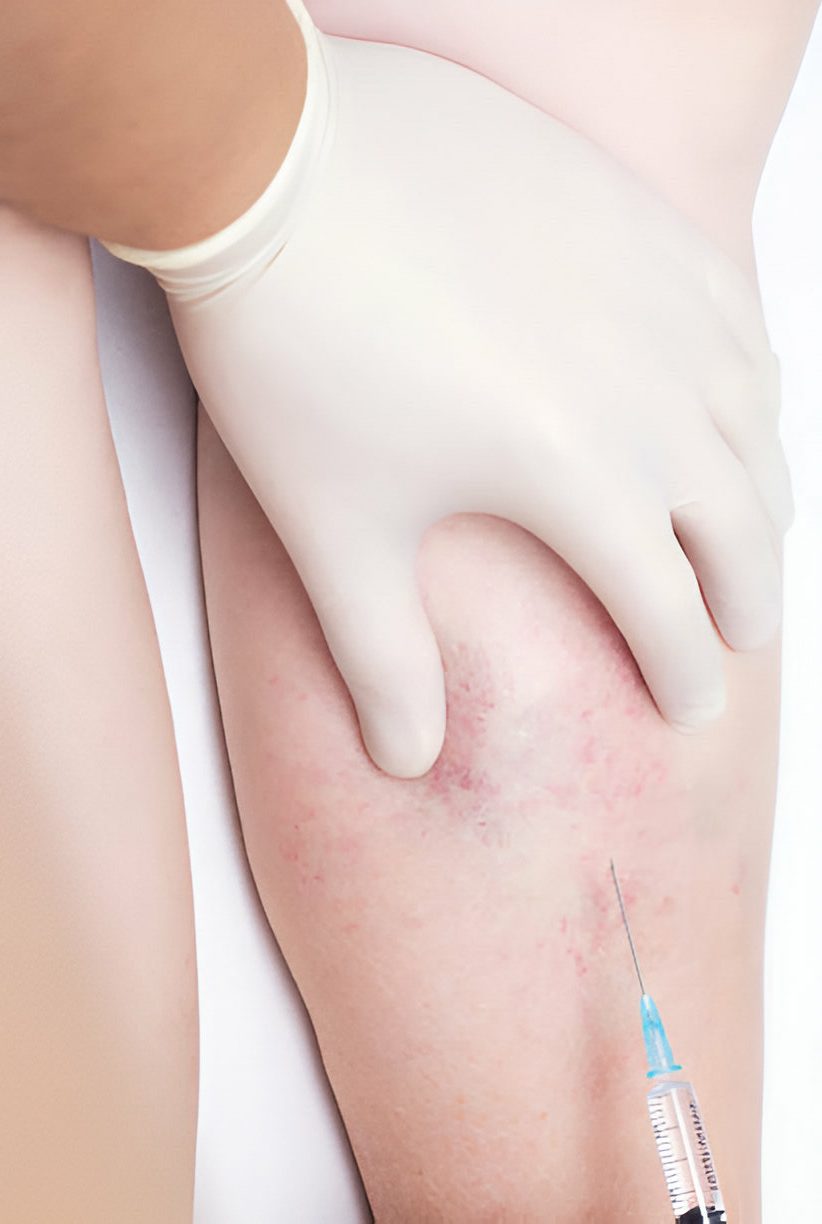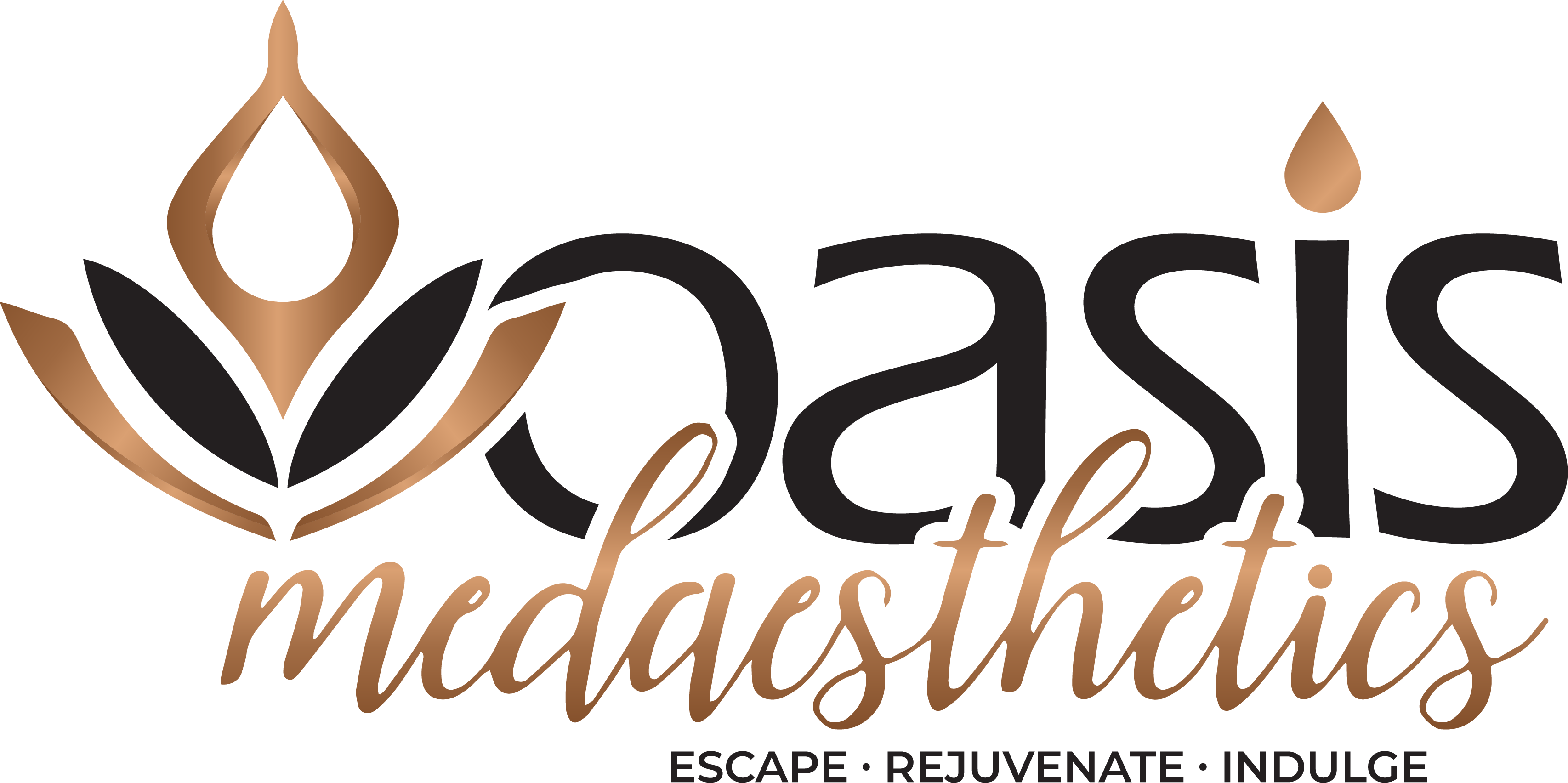Sclerotherapy Vein Reduction & Removal
Sclerotherapy is a minimally invasive procedure used to treat varicose and spider veins.

What is Sclerotherapy, How it Works & What to Expect
Sclerotherapy is a minimally invasive medical procedure used to treat varicose and spider veins. It’s a highly effective treatment that can improve the appearance of these veins and alleviate associated symptoms.
During the procedure, our provider injects a solution directly into the affected veins. This solution irritates the lining of the vein, causing it to collapse and stick together. Over time, the collapsed vein is absorbed by the body, gradually fading from view.
Sclerotherapy is particularly beneficial for smaller varicose and spider veins, offering a non-surgical alternative to more invasive treatments. The procedure is typically quick, with minimal discomfort and downtime. Most patients can resume their normal activities shortly after treatment.
By addressing the underlying cause of varicose and spider veins, sclerotherapy not only improves aesthetic appearance but also helps alleviate symptoms such as pain, swelling, and discomfort associated with these conditions.
Not recommended for the following patients
• Pregnant or breastfeeding women: Sclerotherapy may pose risks to both the mother and the developing fetus or nursing infant.
• Individuals with blood clotting disorders: Conditions such as deep vein thrombosis (DVT) or a history of blood clots may increase the risk of complications with sclerotherapy.
• Those with allergies or sensitivities to sclerosing agents: Some individuals may have allergic reactions or adverse effects to the solutions used in sclerotherapy.
• Patients with skin infections or inflammation at the treatment site: Active infections or inflammation in the area to be treated may interfere with the procedure and increase the risk of complications.
• Individuals with certain medical conditions: Patients with significant medical issues, such as uncontrolled diabetes or cardiovascular disease, may not be suitable candidates for sclerotherapy without careful evaluation by a healthcare provider.
• People with untreated underlying venous insufficiency: Sclerotherapy may not be effective if there are underlying issues with venous insufficiency that need to be addressed first.
After the Appointment
You can get up and walk around after the procedure. Walking and moving helps keep blood clots from forming. Wearing compression stockings or bandages — usually for about two weeks — will keep pressure on the treated veins. Don’t shave your leg or use lotion on it until the site heals.
Possible Side Effects
Side effects that can occur where the needle goes into the skin include:
• Bruising.
• Raised red areas, called hives.
• Small skin sores.
• Darkened skin.
• A number of tiny red blood vessels.
These side effects usually go away within days to weeks. Some side effects may take months or longer to go away completely.
Less-common side effects of sclerotherapy that might need treatment include:
Inflammation. This is usually mild but may cause swelling, warmth and discomfort around the site where the needle went into the skin. Taking a pain reliever you can get without a prescription might help. These include aspirin and ibuprofen (Advil, Motrin IB, others).
Blood clot. If a lump of clotted blood forms in a treated vein, it might need to be drained. Rarely, a blood clot can travel to a deeper vein in the leg, a condition known as deep vein thrombosis.
Deep vein thrombosis carries a risk of a blood clot traveling from the leg to the lungs and blocking a vital artery. This is known as a pulmonary embolism. It’s a very rare complication of sclerotherapy that needs immediate medical care. The symptoms include trouble breathing, chest pain or dizziness, or coughing up blood.
Air bubbles. Tiny air bubbles can rise in the blood. This might not cause symptoms. But symptoms might include seeing light flashes, having headaches, fainting and having nausea.
These symptoms usually go away. But call your health care provider for problems with moving or feelings in arms or legs after the procedure.
Allergic reaction. An allergic reaction to the solution used for treatment is possible, but uncommon.




